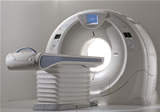| << To Blog Home >> | |
|
|
February 5, 2009 -- 5:00pm EST CT Heart Scans, Radiation and the Media However, the point of this study was not to show that CT scans of the heart have suddenly been found to be dangerous! In fact, the doses recorded at the high end were what was considered "normal" less than a year ago (e.g. NY Times, June 29, 2008). Strikingly, as the accompanying editorial by Dr. Alfred Einstein states:
What is actually real important news, for both medical professionals and patients, is that, using dose reduction strategies, CT angiograms of excellent quality were done with exposures of only 2.1 mSv, approximately what New York City residents are exposed to annually, just from walking around. That's why I titled Angioplasty.Org's coverage, "CT Scans of the Heart Can Be Done with Low Radiation Dose." That's news!
For imaging professionals, the PROTECTION I study in JAMA has a clear message: learn the latest dose reduction strategies and work with your equipment vendor to implement them. With radiation at these low levels, CT angiography may mount a challenge to the most often-prescribed nuclear stress test, which carries radiation doses from 12-21 mSv. Of course, you never read headlines such as "Nuclear Stress Test Zaps Patients" because it's been around so long. Ever since multislice CT scanners became available in 2002-2003, industry and the imaging profession have been working on ways to reduce the radiation exposure. The PROTECTION I study in JAMA shows some positive results, but since 2007, when that data was collected, technology has advanced significantly -- enough so that Dr. Tony DeFrance, for example, regularly performs 320-slice scans with Toshiba's AquilionOne scanner at 1 or 2 mSv. Likewise, physicians such as Dr. Michael Poon are using GE Lightspeed units, and getting in similar ranges. Philips and Siemens have also developed low dose strategies. As evidenced at the start of this post, whenever a study about CT angiography is published, the popular press jumps on the story with accompanying "dreadlines", doing a disservice to the technology, those who practice it, and certainly to patients. A shining, and unfortunately rare, exception to this recent spate of news stories, was Dr. Nancy Snyderman, Chief Medical Correspondent for NBC News, who discussed her own CT heart scan with Matt Lauer on yesterday's "Today Show" (video below).
|
|


 A
new study,
A
new study,  And the implications for patients and professionals
are profound. If you are a patient, says Dr. Michael Poon, past
president of the
And the implications for patients and professionals
are profound. If you are a patient, says Dr. Michael Poon, past
president of the